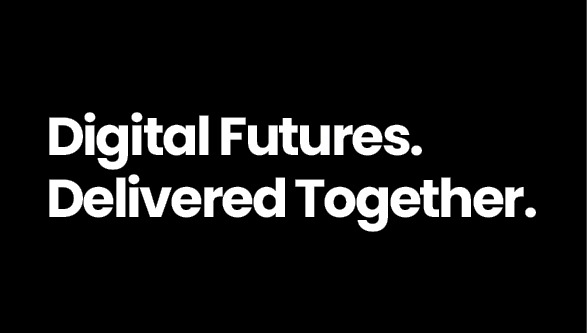The importance of the built environment when deploying or upgrading your wireless network
The 1801 census showed that London officially housed 959,310 people. By 1861 that had grown to 2.8 million, not counting those haunting the Dickensian shadows. The rapid three-fold population increase meant that the medieval sewers under the city could not come close to coping.
Regular cholera outbreaks claimed thousands of lives, a public health crisis on a scale that feels uncomfortably familiar today.
In July-August 1858, the effluent-filled Thames collided with a hot summer to create ‘The Great Stink’ that made London all but uninhabitable. The government, whose newly updated riverside workplace suffered more than most, realised that something must be done – and set the energetic Joseph Bazalgette to the task of upgrading the entire system. By 1865 cholera was more or less eradicated, while typhoid and typhus epidemics became far less frequent.
A century and a half later, over eight million Londoners are still benefitting from the same system. It may be creaking, but it remains an invisible beacon for the benefits of investing properly in public healthcare.
One of today’s most urgent public health upgrades is in digital transformation – and while upgrading bandwidth, security and availability is a priority for most Trusts, the workings are often expected to be similarly invisible in use. However, instant wireless access to the full range of patient records (to pick just one example) doesn’t mean no actual wires. Add the burgeoning requirement for inanimate objects to provide a constant stream of data, plus the personal connectivity expectations of all the humans on site, and it becomes clear why the supporting infrastructure needs to be capable of handling a level of information inconceivable even a few years ago. The more bandwidth required, the more attention must be paid to the specific makeup of the physical environment that hosts it, which usually needs to be adapted and upgraded – or at the very least allowed for – if it’s to stand any chance of coping.
Even so, when Block is engaged to upgrade the digital capability in one of our partner Trusts, people are often surprised to see a surveyor in a hi-vis vest carrying a tripod around, setting it up and taking readings. They will perform this traditional task in as many as 1,000 locations around the campus, because years of experience has taught us that there’s no virtual substitute for this manual, methodical process – unless of course you just want to ‘get the job done’ rather than concern yourself with such trivial matters as reliability of signal, appropriate performance, adequate security and future-proofing.
We see our task as providing the privilege of the wide-angle view that comes as a bonus with our broad range of experience. We’ve worked in all kinds of buildings, with all manner of constraints, and can bring all our acquired wisdom to the table. Often our most valuable contribution is to contextualise, to educate, and to help people understand the art of the practical.
It’s no surprise that people tend to think of terms they can easily comprehend. The prevalence of reasonably priced, always-on wireless connectivity as we roam around our homes, streets and workplaces can lead to some understandably skewed perceptions about how easy it might be to upgrade an entire Trust’s IT across the whole estate. In short, people expect it to resemble the environment they’re used to coming to every day, while being completely different in capacity of operation. Can’t you just plug in a few routers and work your invisible magic? We could, yes. But like a drainage system designed for the subjects of Henry VIII, or indeed the same monarch’s own unloved immune system, it won’t work very well – or for very long.
We often encounter surprise when we report that after a thorough examination of the environment, our team’s recommendation is that a wireless approach isn’t the best option even in these free-roaming days. Take the Nightingale hospitals. When Block was asked to supply the IT infrastructure to transform the vast Excel Centre into an emergency COVID ward at incredible speed while keeping costs acceptable, the expectation was that all PCs would be connected to a wireless network.
Once on site, we discovered that the open nature of the building, the lack of mounting positions and limited hardware worked against it. As many will have noted when emerging from a sporting event or trying to stay in contact at a festival, a lack of walls can be the enemy of a reliable signal. With everyone vying all at once for the same bandwidth, it’s a lesson in why the flying cars from The Jetsons aren’t yet a thing. Without some structure to bounce off, the signals become as tangled as a drawer full of old chargers. Add in the proximity of City Airport, with its own interference potential from radar and other signals, and the most appropriate, up-to-the-minute solution was found to be old-fashioned physical wiring.
Happily, the Trust in charge of the project has learned over the years to place their own trust in us. They knew we’re always led by outcome, not budget, and never by nodding along and keeping quiet in case the ‘sale’ slips from our hands. Since our experience has been gleaned primarily in Health and Care, the human costs of not doing so make any other approach unthinkable. Equally happily, this same trove of experience means our ‘time to value’ on a project is generally markedly fast, as there’s far less time wasted on dead ends or mistaken assumptions.
So wherever we’re working, we’ll always take the entire environment into consideration: every present or absent supporting wall, every multi-storey edifice, every lift shaft, every closet and cranny. Methodically, manually, even boring-ly, we’ll always insist on checking all the physical drains are up to it before laying any hi-tech tiles. Or, indeed, expecting a high-rise modern city to function on an invisible infrastructure built for our ancestors.

